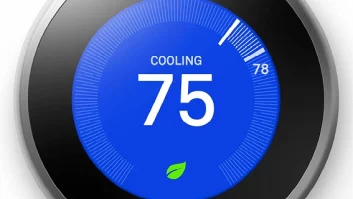SAN FRANCISCO – Google used its I/O developers conference last week to launch a developers’ preview of the next version of Android, announce a renewed effort in mobile payments to challenge Apple Pay, and unveil an IoT OS that embraces home automation.
The next generation of Android, called M, will be released sometime later this year, executives said. The new mobile-payment effort, called Android Pay, will launch at the end of the year to make in-app purchases and in-store NFC-based tap-to-pay purchases. More than 700,000 stores will participate, and the technology will be available preinstalled on Verizon, AT&T and T-Mobile phones.
For its Brillo IoT effort, Google will make developer software available in the fourth quarter with a common Weave communication layer enabling IoT devices to talk to one another, to a phone and to the Cloud.
Here’s what the company revealed:
Android M The 6.0 OS, which will support Android Pay, adds support for fingerprint recognition, which can be used in conjunction with Android Pay as well as to unlock a phone.
The OS will also extend battery life by using motion detection to determine if the determining if the device has been left unattended for a while. If so, Android will cut back background activity, “trading off a little bit of app freshness for longer battery life,” the company said.
Another feature, called Now on Tap, lets users access information wherever they are on their device. For example, if a friend texts about having dinner at a new restaurant, the phone user doesn’t have to leave the texting app to ask Google Now for reviews about the restaurant , menus, and how to get there.
The M release also supports USB-C connectors and gives users more control over granting app permissions. An app will ask for permissions when launched as they’re needed, and users can manage permissions in settings. Permissions will also be flexible. If an app asks for access to the camera and microphone, for example, users can choose to grant both, one or none.
Google Pay
Though the Google Wallet mobile-payment platform didn’t get traction, Google expects Android Pay will, in part because a carrier consortium dropped its plans for its own mobile-payment platform.
Android Pay will “soon” be accepted in more than 700,000 store locations and in more than 1,000 Android apps, the company said.
The company partnered with top payments processors including Braintree, CyberSource, First Data, Stripe and Vantiv. Google also enlisted all major payment networks in the U.S., including American Express, Discover, MasterCard and Visa to deliver industry-standard security tokenization.
With Android Pay, users will pay with a credit or debit card. By enabling bank apps to integrate with the platform, Android Pay lets users add their credit and debit cards directly from bank apps for use with Android Pay.
For security, Android Pay won’t send a user’s actual credit or debit card number for a transaction, instead sending a virtual account number.
IoT Strategy
Google’s IoT effort, dubbed Brillo, will create an operating system that connects devices in a seamless and intuitive way, thanks to a common communications layer that will enable IoT devices to talk to one another, to a phone and to the Cloud, the company said. All connected devices will talk the same language. The developer stack will be available in the fourth quarter.












